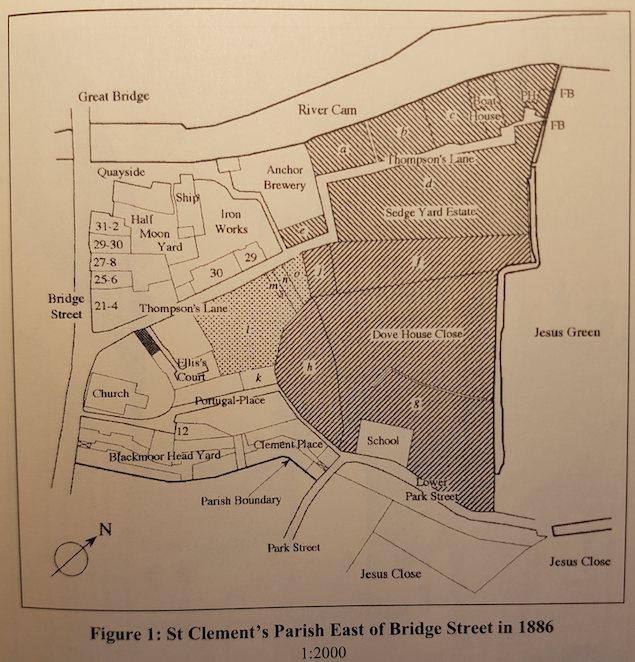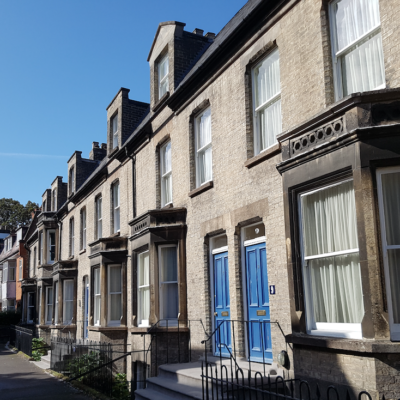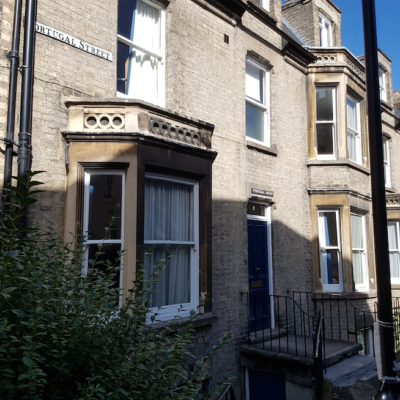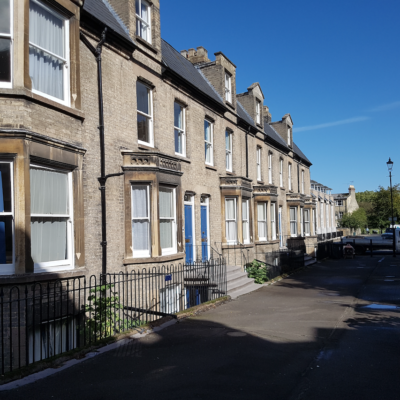Search by topic
- archaeology
- Building of Local Interest
- chapel
- charity
- church
- crime
- dressmaker
- fire
- Great Eastern Railway
- Listed building
- Mapping Relief
- medieval
- oral history
- poverty
- Public House
- Religious House
- Roman
- scholar
- school
- Then and Now
- tudor
- women
- work
- world war one
- world war two
Search by text
 St Clement's Parish east of Bridge Street in 1886
St Clement's Parish east of Bridge Street in 1886Dove House Close
History of Dove House Close
An Intimate History of the Parish of St Clement’s, T E Faber, 2006
In 1359, a William le Gode granted to Roger de Herlaston and three others ‘ a dovecot with a garden and other tofts adjoining the same garden and a grange on the common river bank in Cambridge’. This is very likely to refer to the areas later known as Sedge Yard Estate and Dove House Close. He seems to have purchased most if not all of the Anchor brewery site separately.
The Harleston estate, which included land in Coton, Chesterton and Cambridge, was bought in 1533 by St John’s College. Sedge Yard and Dovecot Close were at that time let as a single property, described in 1498-9 as ‘a garden called le pondeyarde’. No part of the Anchor brewery site was acquired by St John’s at the time.
The tenant of the pondyard in 1533 was Thomas Brakyn who paid a rent of £2 13s 4d. He also supplied St John’s with 4 pike a year.
Faber has constructed a list of the tenants of the pondyard as far as possible from the documentary evidence surviving:
1489 – 1515 Hugh Rankyn
1516 – 1545 Thomas Brakyn
1546 – 1557 Richard Brakyn
1558 – 1562 Thomas (John) Church
1563 – 1587 Oliver (John) Flint
1588 – 1607?: Widow (Joan) Flint
1608? – 1633: Joh Andrews or his widow
1634 – 1638 Thomas Purchas
1639 – 1652 Francis Sheldrake
1653 – 1665 Elizabeth Ranew
1666 – ????: Robert Ibbot
The lease of 1609 marks the moment when the Sedge Yard estate and Dove House Close were separated (though they were not yet called by those names.)
Although Dove House Close belonged to the Master and Fellows of St John’s in principle, in practice they had little say in the management of it. However by the 19th century there is correspondence that suggests the Master was treating the land as his own private property. In 1877 £100 was paid for the site of the school that was built that year.
Leases after 1609 until 1887 were granted by the Master and not the college, and have therefore not survived. Loggan’s map of 1688 shows that there were still fishponds and a dovecot. By the time of Custance’s map of 1798 most of the ponds had been filled in and the dovecot has disappeared. The land is labelled as’Clarke’s Nursery’ and it was evidently divided up into a number of beds.
Clarke paid £30 p.a. for the land; he was an old servant of Dr Chevallier, an 18th cent. master of St John’s. He must have died before 1836 as a plan of that date refers to ‘the late Mr Richard Clarke’s garden.’ he was succeeded as tenant by George Sussum, who had a greengrocer’s shop on the west side of Bridge Street for many years, so it was Mr Sussum who received compensation for the fruit trees destroyed when the school was built.
Contribute
Do you have any information about the people or places in this article? If so, then please let us know using the Contact page or by emailing capturingcambridge@
License
This work is licensed under CC BY-NC-SA 4.0








